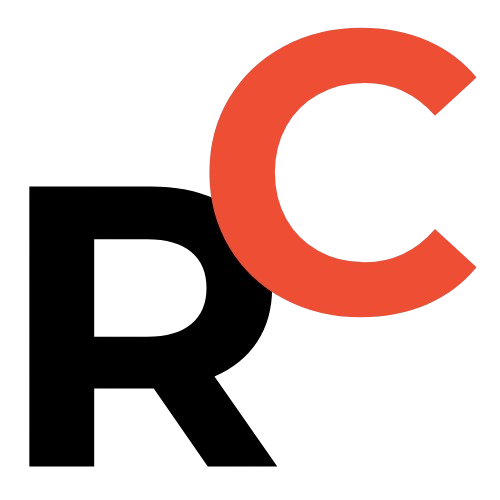“`html
Key Points
- The People’s Bank of China (PBOC) has been making net liquidity injections for four consecutive months, with the June injection being ¥118 billion RMB ($16.2 billion USD).
- These injections aim to manage market stress from government bond issuance and maturing interbank certificates of deposit, and to boost the economy through quantitative monetary policy.
- Beyond MLF operations, the PBOC also utilized reverse repurchase operations, adding a total of ¥318 billion RMB ($43.7 billion USD) in mid-term liquidity in June.
- Analysts predict a potential liquidity gap of ¥1 trillion RMB ($137.6 billion USD) in July, driven by increased government bond issuance and fiscal spending.
- The PBOC’s proactive approach, including potential buying and selling of government bonds, is expected to continue to stabilize cross-quarter funding and support economic growth.
- Managing Market Stress: Addresses government bond issuance wave and maturing interbank certificates of deposit. Aims to stabilize market expectations and maintain ample liquidity.
- Boosting the Economy: Part of an intensified quantitative monetary policy to drive stable growth in social financing and M2 money supply, providing counter-cyclical support.

The People’s Bank of China (PBOC) is injecting liquidity for the fourth straight month, a clear signal it’s getting serious about tackling a massive trillion-yuan liquidity challenge and stabilizing the market.
If you’re an investor, founder, or just watching global tech and finance trends, this is a big deal.
China’s central bank is navigating a tricky economic landscape, and its every move sends ripples across the globe.
Let’s break down what’s happening.
The Breakdown: Four Months of Consistent Cash Injections
On June 24, 2025, the PBOC announced it’s conducting a fresh operation on June 25.
Here’s the key number:
- A ¥300 billion RMB ($41.3 billion USD) Medium-term Lending Facility (MLF) operation.
With ¥182 billion RMB ($25.1 billion USD) in existing MLF loans expiring this month, this results in a net injection of ¥118 billion RMB ($16.2 billion USD) into the banking system.
This isn’t a one-off move. It’s a pattern.
The PBOC has been consistently opening the taps since March, making this the fourth consecutive month of net injections:
- June Net Injection: ¥118 billion RMB ($16.2 billion USD)
- May Net Injection: ¥375 billion RMB ($51.6 billion USD)
- April Net Injection: ¥500 billion RMB ($68.8 billion USD)
- March Net Injection: ¥63 billion RMB ($8.7 billion USD)
This sustained push is the PBOC’s way of showing it’s committed to keeping the financial system flushed with cash.

Resume Captain
Your AI Career Toolkit:
- AI Resume Optimization
- Custom Cover Letters
- LinkedIn Profile Boost
- Interview Question Prep
- Salary Negotiation Agent

Why Now? The Policy Behind the Push
Market analysts are pointing to some deep policy reasons for this consistent action.
Wang Qing (Wang Qing 王青), Chief Macro Analyst at Dongfang Jincheng (Dongfang Jincheng 东方金诚), boils it down to two core drivers:
- Managing Market Stress: With a huge wave of government bonds being issued and a peak in maturing interbank certificates of deposit, the system needs extra cash. These injections help maintain ample liquidity, keep money market swings in check, and stabilize market expectations.
- Boosting the Economy: This is a clear signal of an intensified quantitative monetary policy. The goal is to drive stable growth in social financing and M2 money supply, better fund businesses and households, and provide strong counter-cyclical support to the economy.

More Than Just MLF: A Multi-Tool Approach
The MLF is just one tool in the PBOC’s kit.
The central bank also recently used another powerful instrument: outright reverse repurchase operations.
- It conducted ¥1 trillion RMB ($137.6 billion USD) in 3-month operations.
- And another ¥400 billion RMB ($55.0 billion USD) in 6-month operations.
After accounting for expiring operations, this added a net ¥200 billion RMB ($27.5 billion USD) to the market.
When you combine that with the MLF injection, the total mid-term liquidity added in June alone hits ¥318 billion RMB ($43.7 billion USD).
According to Wang Qing, since the PBOC has already used these tools effectively this month, we probably won’t see more reverse repo operations before July.

Find Top Talent on China's Leading Networks
- Post Across China's Job Sites from $299 / role, or
- Hire Our Recruiting Pros from $799 / role
- Qualified Candidate Bundles
- Lower Hiring Costs by 80%+
- Expert Team Since 2014
Your First Job Post

Looking Ahead: July’s Trillion-Yuan Tightrope Walk
While the PBOC’s proactive stance is reassuring, July is shaping up to be a critical month.
Ming Ming (Ming Ming 明明), Chief Economist at CITIC Securities (Zhongxin Zhengquan 中信证券), calculates a potential liquidity gap of ¥1 trillion RMB ($137.6 billion USD) in July.
Pressure from fiscal spending and more government bond issuance will ramp up, meaning the market can’t easily fix this on its own.
Everything will hinge on the PBOC’s next move.
There are reasons for cautious optimism:
- Historically, the PBOC tends to increase liquidity at the end of June.
- June is also a big month for fiscal spending, which releases funds back into the system.
Most interestingly, the PBOC mentioned in its Q1 report that it plans to resume buying and selling government bonds when the time is right.
Ming Ming believes this is directly tied to supporting the wave of government bond issuance. He expects the PBOC to remain accommodative and might even use this bond-buying tool to inject cash.
Tan Yiming (Tan Yiming 谭逸鸣) of Tianfeng Securities (Tianfeng Zhengquan 天风证券) agrees, noting that with the PBOC’s proactive attitude, cross-quarter funding should be stable.

ExpatInvest China
Grow Your RMB in China:
- Invest Your RMB Locally
- Buy & Sell Online in CN¥
- No Lock-In Periods
- English Service & Data
- Start with Only ¥1,000

The Bottom Line for Investors and the Market
The big picture is clear: China’s central bank is not sitting on the sidelines.
It’s actively using a combination of powerful tools—MLF, reverse repos, and potentially government bond purchases—to manage huge liquidity demands and support economic growth.
For now, the market is stable. The DR007, a key interbank lending rate, has held steady despite disruptions, showing the PBOC’s interventions are working.
However, as Wang Qing notes, the market should stay alert. Short-term volatility is still possible, especially around key events like tax periods and bond payments.
As we head into the second half of the year, expect the PBOC to continue coordinating with fiscal policy to expand domestic demand and stabilize growth, meaning the trend where the PBOC injects liquidity is likely to continue.

References
- 万亿流动性缺口挑战在即 MLF连续4个月净投放稳预期 – 第一财经
- 第一财经 (Yicai) – Official Website
- CITIC Securities – Official Website
- Tianfeng Securities – Official Website
“`


![US Dollar Index Dips Below 100: What's Fueling the New Taiwan Dollar's Record Surge? [FreshFromChina]](https://freshfromchina.com/wp-content/uploads/2025/05/US_Dollar_Index_Dips_Below_100__What_s_Fueling_the_New_Taiwan_Dollar_s_Record_Surge_____FreshFromChina-150x150.png)

